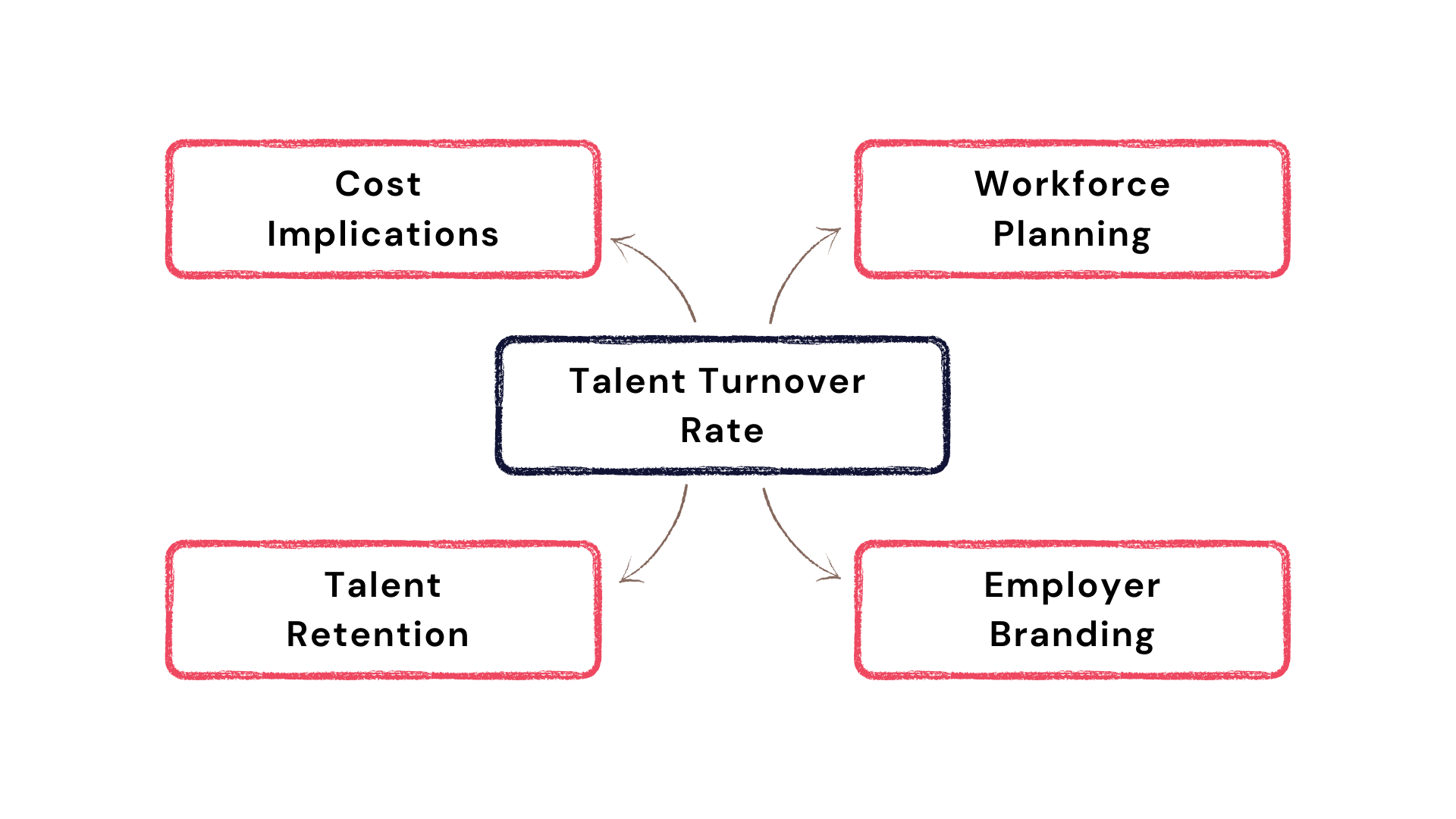Home » PSApedia
Talent Turnover Rate
Discover Insights on Talent Turnover Rate. Optimize Retention and Minimize Disruptions.

What is Talent Turnover Rate?
Talent turnover rate represents the percentage of employees that leave an organization during a set period of time, usually annually. It signals workforce stability and provides a metric to gauge employee satisfaction and engagement levels. A high turnover rate often indicates underlying issues
In the Professional Service Automation (PSA) domain, understanding and managing turnover is essential for maintaining a stable and skilled workforce.
Why Talent Turnover Rate is so important?
Monitoring turnover rate enables organizations to quantify and manage the risk of losing top talent and critical skills. Turnover analytics help identify patterns, diagnose root causes and take corrective actions – from compensation benchmarking to retention initiatives. Maintaining optimal workforce churn is essential for business continuity, productivity and innovation. Managing Talent Turnover Rate is critical for several reasons:
1. Cost Implications: High turnover leads to increased recruitment, onboarding, and training costs, impacting overall operational expenses.
2. Workforce Stability: Lower turnover ensures continuity in project delivery and maintains a stable team dynamic, enhancing productivity.
3. Employee Satisfaction: Monitoring turnover rates provides insights into employee satisfaction levels and helps in addressing underlying issues.

Why Talent Turnover Rate is so important?
How to calculate Talent Turnover Rate?
Formula:
Talent Turnover Rate = (Number of Employees Who Left / Average Number of Employees) × 100
Example:
If a company had 20 employees and 5 left during a year, the turnover rate would be:
Talent Turnover Rate=(5/20)×100=25%
Talent Turnover Rate vs Attrition Rate
While related metrics, turnover rate differs conceptually from attrition rate. The latter only accounts for voluntary departures. By contrast, turnover rate covers all exits – resignations, dismissals, retirements etc. Understanding both rates helps organizations identify what proportion of churn is within or outside their control.
1. Retention Rate: While Talent Turnover Rate indicates departures, Retention Rate focuses on the percentage of employees retained over a period.
2. Attrition Rate: Attrition Rate includes both voluntary and involuntary departures, whereas Talent Turnover Rate often refers to voluntary exits.
| Metric | Definition | Importance / Use |
|---|---|---|
| Talent Turnover Rate | Rate at which employees voluntarily or involuntarily leave | Indicates the rate of employee departures within a given period |
| Attrition Rate | Rate at which employees leave, typically through resignation | Measures the rate of employee departures, often through voluntary means |
| Employee Retention Rate | Percentage of employees retained over a specific period | Reflects the ability to retain talent and indicates organizational health |
| Time-to-Fill | Average time taken to fill a vacant position | Measures the efficiency in filling vacant positions with new hires |
How Is Talent Turnover Rate Used?
HR uses turnover analytics to formulate retention strategies for critical talent segments and build predictive models. Finance leverages the data to forecast recruiting and rehiring budgets. Executives depend on churn metrics to assess and maintain competitive advantage through employer branding. Leaders must intervene to address high turnover through better incentive structures, career development programs and succession planning.
1. Identifying Causes: Analyzing turnover reasons aids in addressing issues, improving work conditions, and retaining top talent.
2. Succession Planning: Predicting turnover helps in succession planning, ensuring the availability of qualified replacements.
Ready to Optimize Your Talent Turnover Rate?
KEBS enables people executives to be proactive and intentional in cultivating talent growth and engagement, maintaining crucial skills availability despite market volatility, by providing actionable visibility into anticipated churn indicators.
Leveraging PSA software provides insights into turnover patterns, enabling proactive measures. PSA tools help identify critical skills lost due to turnover, facilitating focused recruitment and development efforts. Utilizing PSA systems for exit interviews aids in understanding the reasons behind departures, enabling corrective actions.

KEBS HR Dashboard
Ready to optimize Talent Turnover Rates for a more stable workforce? Connect with KEBS or request a demo to explore how our PSA solutions can help manage and reduce turnover effectively.



